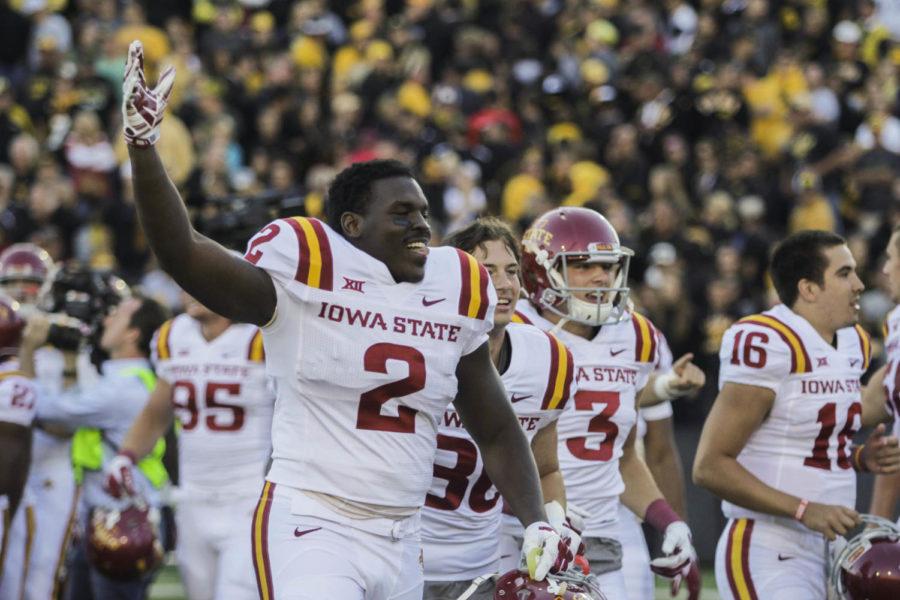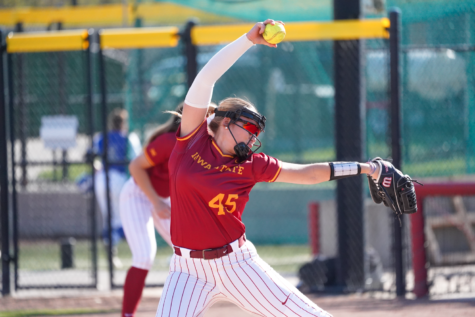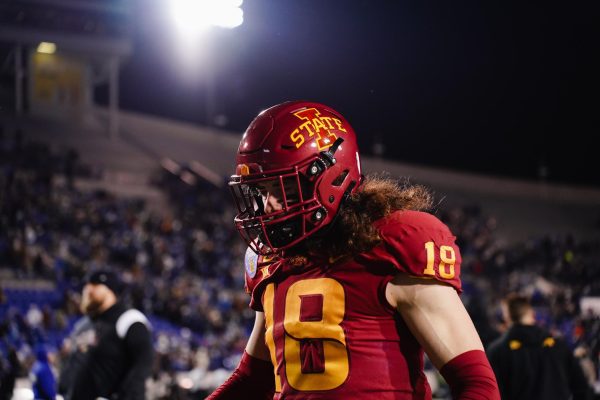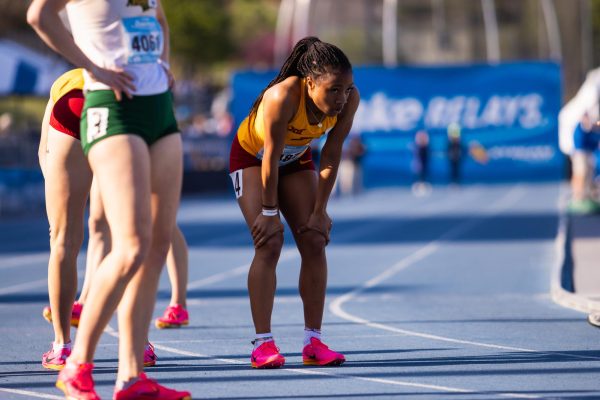ISU linebacker ready to play after redshirt season
Junior linebacker Jordan Harris celebrates after winning the Cy-Hawk Series at Kinnick Stadium in Iowa City on Sept. 13. Harris is a part of a change in the ISU defense that sees eight junior college transfers.
April 8, 2015
Coming from Copiah-Lincoln Community College in Wesson, Miss., Jordan Harris expected to make an immediate impact on the ISU football team.
Harris was fresh off an impressive junior college season, one in which he averaged 13.8 tackles per game — leading the NJCAA. Harris posted 124 tackles in 2013, with 79 solo stops.
So when the Clarksdale, Miss. native was handed a redshirt upon arrival at Iowa State last spring, one could imagine how that would be hard to deal with.
But in the eyes of both defensive coordinator Wally Burnham and ISU coach Paul Rhoads, Harris simply wasn’t ready. And while some called for Harris’ redshirt to be burned last season, Rhoads stuck to his guns.
“There’s too much investment in all these players to do that unless you’re in dire straights or it’s a complete need,” Rhoads said. “We didn’t have that with Jordan. He would have been in a couple special teams [plays] and that would have been it. We would have had one year out of him. Now we have two years out of him and now we have a chance to get two productive years out of him.”
Harris admitted he was pretty disappointed at first. But once he got over the initial setback, he started to understand the logic behind the redshirt.
“I was kind of frustrated but I knew the coaches had a reason for that,” Harris said. “They won’t just bring me here for no reason or no purpose. I think they wanted to redshirt me for the future of this team.”
So Harris took a step back and learned.
After a while, things really started to click for Harris. He adjusted to the system much better and began to understand the technical aspect of playing linebacker at the Division I level — something he said is much different than when he played at Copiah-Lincoln.
Harris’ ability to pick up the new system and really understand the mental aspect of the game came a lot from the help of the older players, specifically linebacker Jevohn Miller.
“I made sure in the meetings that I sat beside Jevohn Miller a lot last year,” Harris said. “He was the starter, so he would just whisper in my ear what to do and what not to do. He taught me a lot.”
After his redshirt year and with all the guidance and tips he received from teammates and coaches, Harris said he can tell he is much better for it. The biggest difference he’s seen is his speed, saying he is playing much faster than he used to.
But it’s not just Harris who has noticed the improvement.
“I don’t know if a 180 is accurate, but he’s not that far from it from a spring ago,” Rhoads said. “He’s a different player right now. As that confidence builds, so does the speed, so does the ability to make plays both run and pass. He was definitely apart of that conversation.”
This fall, Harris could be looking at a good amount of playing time at the linebacker spot, especially since the position has suffered a few blows due to injury lately.
And with the spring season wrapping up, Harris’ time to continue to show the team and the coaches how much he’s improved is running out. By the time he walks off the field after Saturday’s spring game, he said he wants to accomplish one main thing.
“[I want to show] that I know what I’m doing,” Harris said. “I’m playing faster and listening to Wally [Burnham] and [Paul] Rhoads’ perspective on the things I need to do. I just want to show them that I’m a way better player than I was last year.”

















